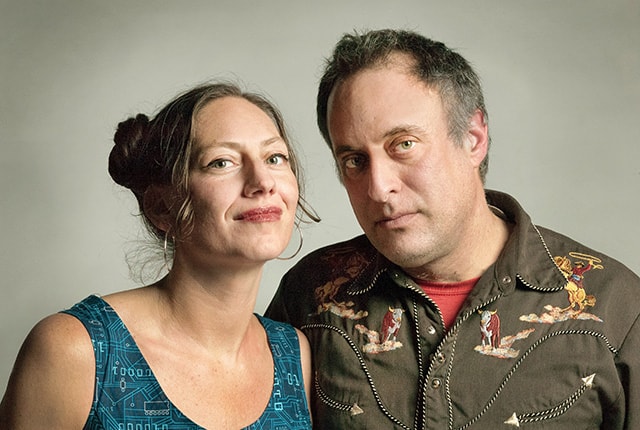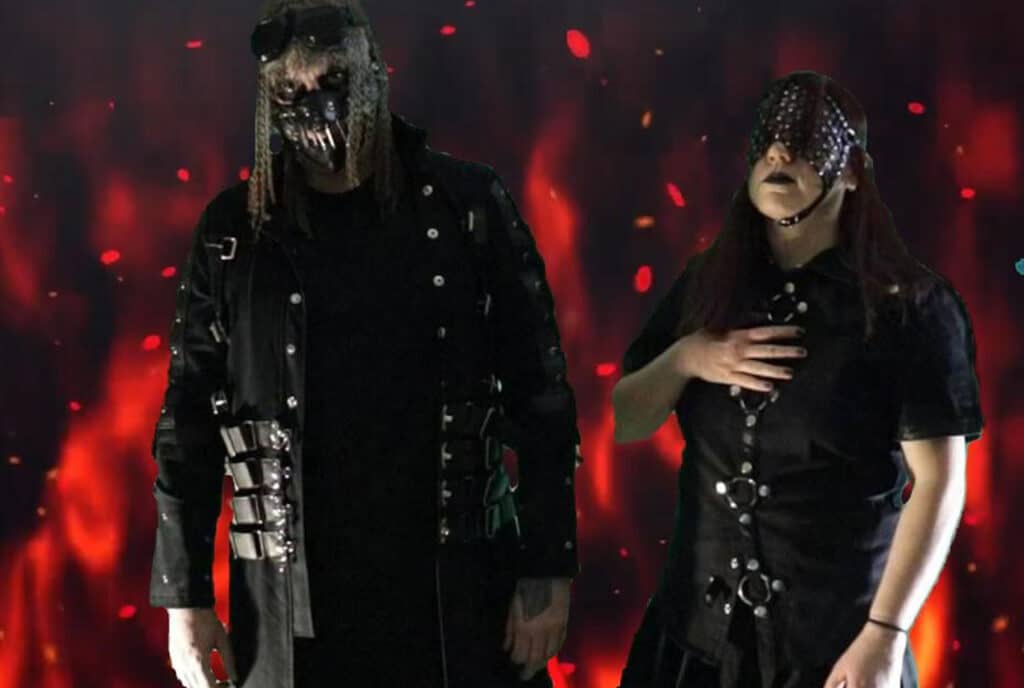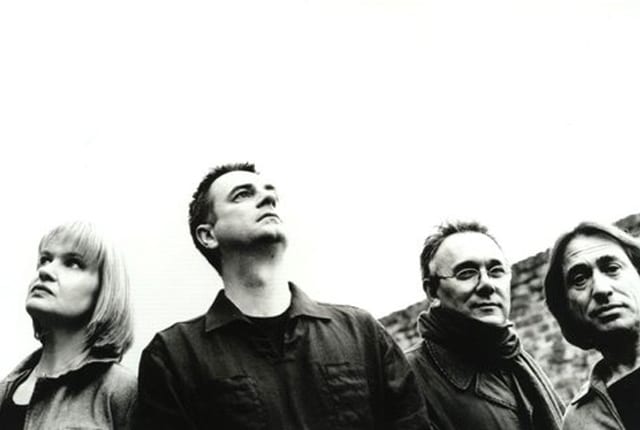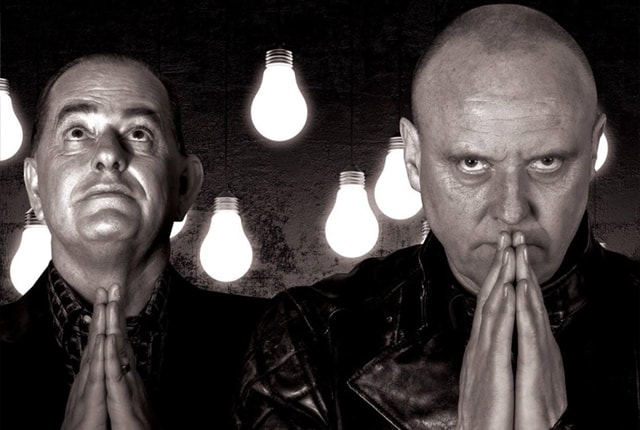??(OHMSLICE) is an experimental improvisational project started by Bradford Reed (King Missile III, inventor of the electric board zither called the “pencilina”). Reed initially sought to experiment with processing percussion through modular synthesizers, but OHMSLICE evolved to incorporate other collaborators and sounds. Appearing on the debut OHMSLICE album, “Conduit,” are poet Jane LeCroy (Sister Spit, Poetry Brothel), drummer Josh Matthews (Drumhead, Blue Man Group), trumpet player/saxophonist Daniel Carter (Thurston Moore, Yo La Tengo) and guitarist Bill Bronson.
Could you talk about the origins of ??(OHMSLICE)?
Bradford Reed: “About two years ago, I started messing around with a modular synthesizer, a real one. I’d always kind of dabbled with software that emulated these things. So finally, I got one, and my idea was to start drumming through it, to process sound with it. That ended up being a good idea.
“Every year, I go to this kind of crazy psychedelic summer camp party-type of thing upstate. My friend Jane LeCroy, the poet, was up there, and we ended up improvising together because the person whom I normally improvise with wasn’t there. It was this impromptu thing. Also, I’ve been double drumming with my drum brother Josh Mathews, whom I’ve played with since we were teenagers. Eventually, everything came together with Josh, Jane, and Daniel Carter, the saxophone/horn player, and Bill Bronson, who has been stepping in with guitar. It’s a crew of people who bring their own thing on top of the foundation of this drummer through the modular synth.”
What does the modular synthesizer bring to the music?
Bradford Reed: “I’m actually changing the notes with the foot pedal, and the idiosyncrasies and limitations of the modular synth dictate the way the base of things work. It’s just a very idiosyncratic, limited instrument in the way that I’m playing it, because I’m playing drums at the same time. For better or for worse, that created a certain kind of vibe, a drone-y and pulsating character.”
What initially attracted you to it?
Bradford Reed: “It’s the sound and the immediacy of it. A good friend of mine, Zach Wayton, got a setup, and I’d always thought, ‘Oh, this is insane because they are just so expensive and why not just use software?’ But as soon as I go my hands on it, it was clear how much deeper vibrationally they work.”
What synthesizer is it exactly?
Bradford Reed: “Everything is custom, and what’s really funny is that I’ve used the same patch, basically building on the same configuration the whole time. Gear-wise, I have 3 oscillators and 2 filters, so I can create chords by tuning them differently. It offers really weird ways of playing. But mostly, it’s a monophonic instrument, so if I want to get intervals, I either have to detune something or loop something. That again is a hurdle. If I have a musical idea, say I want an interval or a third, there is a hurdle I’ve got to figure out how to overcome. The sound of overcoming those hurdles is part of the journey of the piece. It demands patience and courage to deal with it.”
The album is described as being recorded live. Was this done in the studio or as part of performances?
Bradford Reed: “It’s recorded live in that there really aren’t any overdubs. They are just used in a couple of places, like one song ended up getting a guitar overdub and we might have done a secondary vocal pass that was almost the same. As far as composition goes, basically everything on the record is improvised by the players. Then there are these little pieces that are more composed which are used as intermediaries between the bigger groups of pieces. I did edit quite a bit, but compositionally, it’s all improv. We would get together and sometimes it was whoever would show up, whoever could make it. Our gigs are kind of the same way because we’re all in New York and busy, so it always has to do with who is available. So sometimes, Josh and I would play something and talk about it a little bit and then play it again. Nothing was very composed. Jane would just wing it, or sometimes she’d come in with a poem or she’d come in an hour after Josh and I had gotten together, with some idea and then we’d put it all together. It was never too pre-meditated as to what would happen.”
Given the improvisational nature, what percentage of what you came up with made it onto the final album?
Bradford Reed: “I’d say about 80% of it was used, which is fairly high for the nature of improvised stuff. With what I’ve worked on, it’s usually 25%, or something like that; a lot of stuff gets discarded.”
How does your live sound compare to what we hear on the album?
Bradford Reed: “It’s just always something different. It’s very interesting what happens, and it also demands a bit of patience for us. What’s really funny is that if there’s six of us, generally at every gig three would say, ‘That was awesome!’ and then the other three would say, ‘That was really weird.’ It’s rare that there is a consensus that everything’s great. I’ve learned that the audiences really tend to honestly enjoy what happens. Much of the time, the struggle actually makes for some really interesting and engaging listening. Part of what we’ve been learning is to trust there is a bigger picture going on, and if it doesn’t feel good for one person maybe it’s working as a group sound. Sometimes we all think, ‘Oh, that’s really great,’ and that’s usually when there’s a decent sound system and we can hear ourselves well on the stage.”
Live, do you work with people who didn’t appear on the album?
Bradford Reed: “It’s been pretty much, 90% of the time, the players who are on the record. But we’re always open to other people joining us. Sometimes, people will join us if we feel it is a good fit.”










